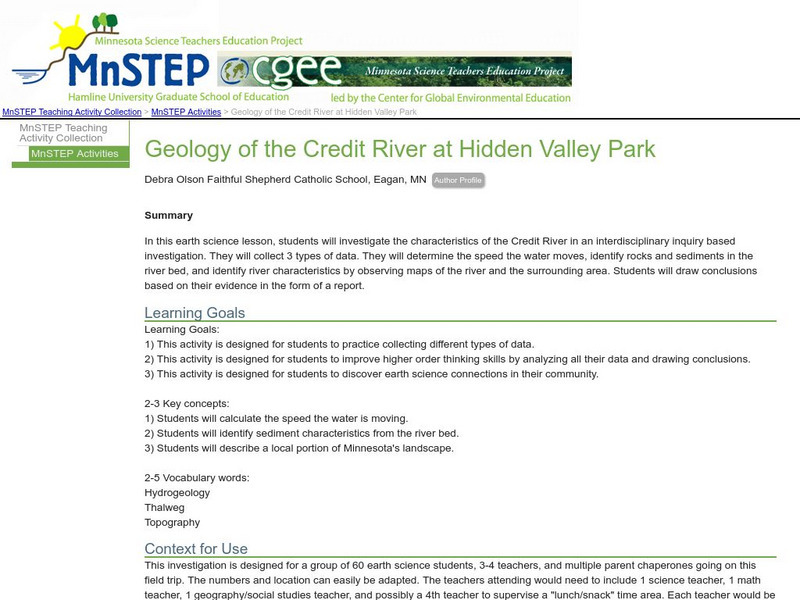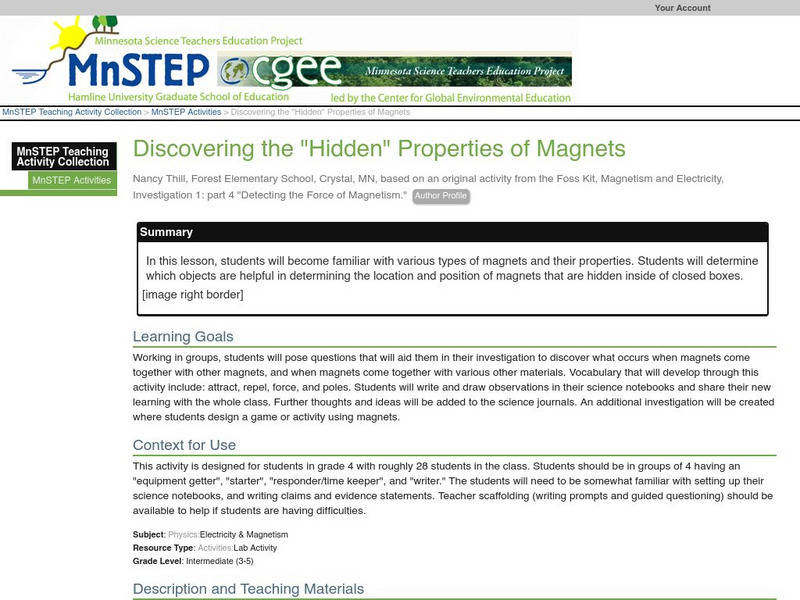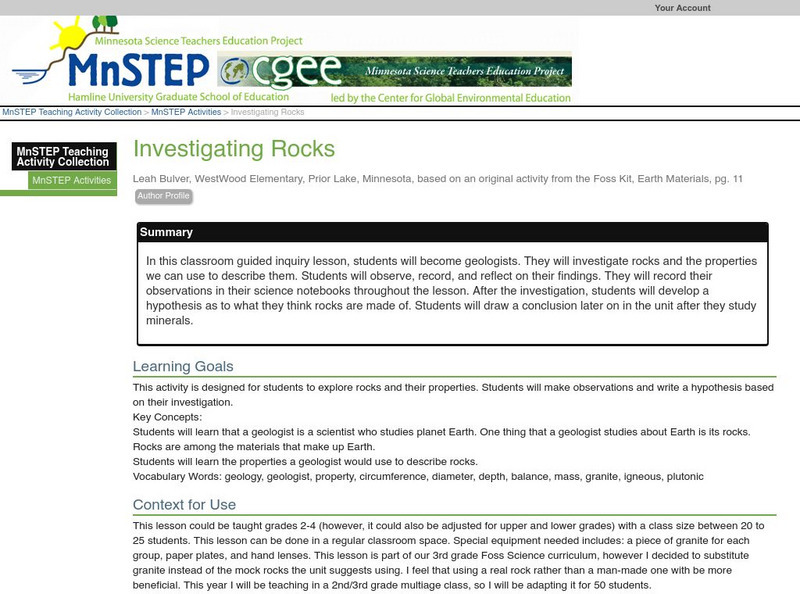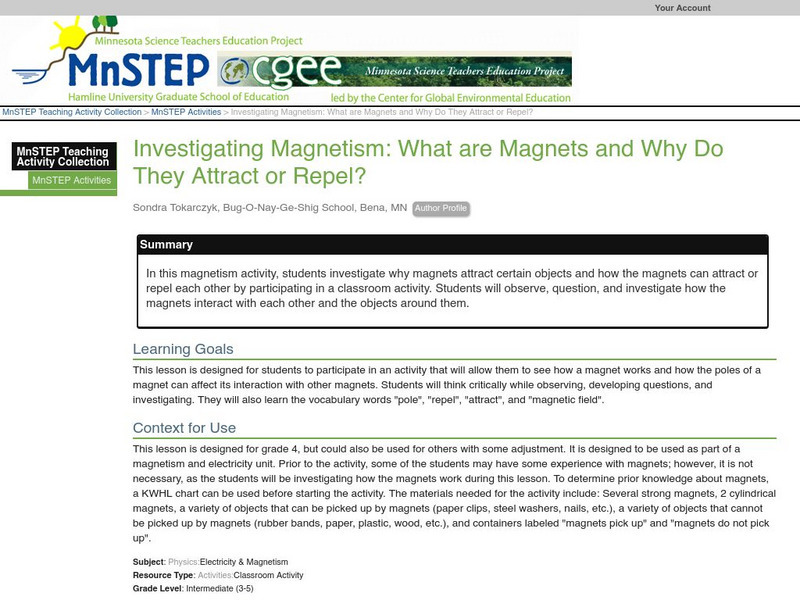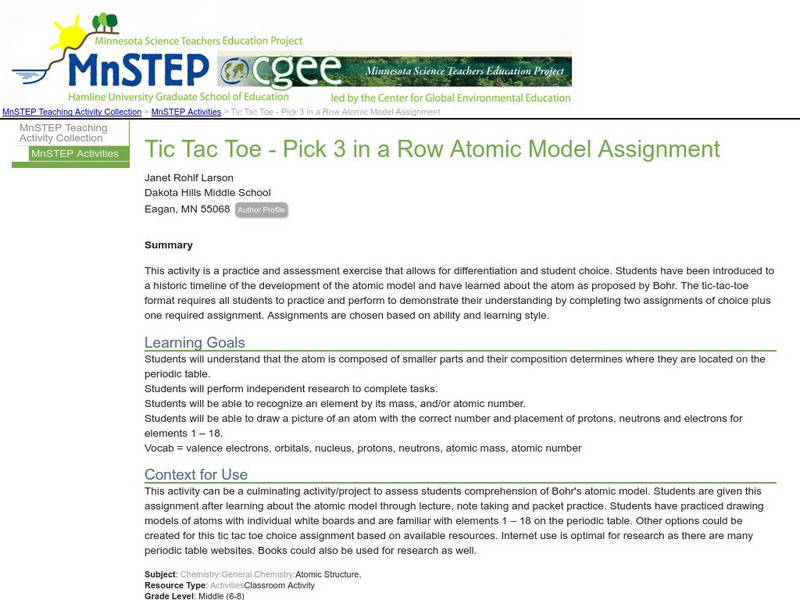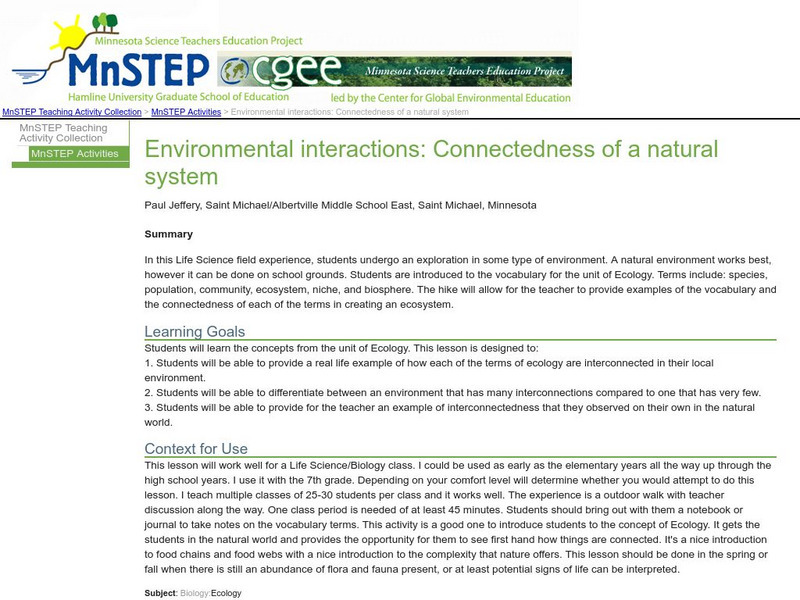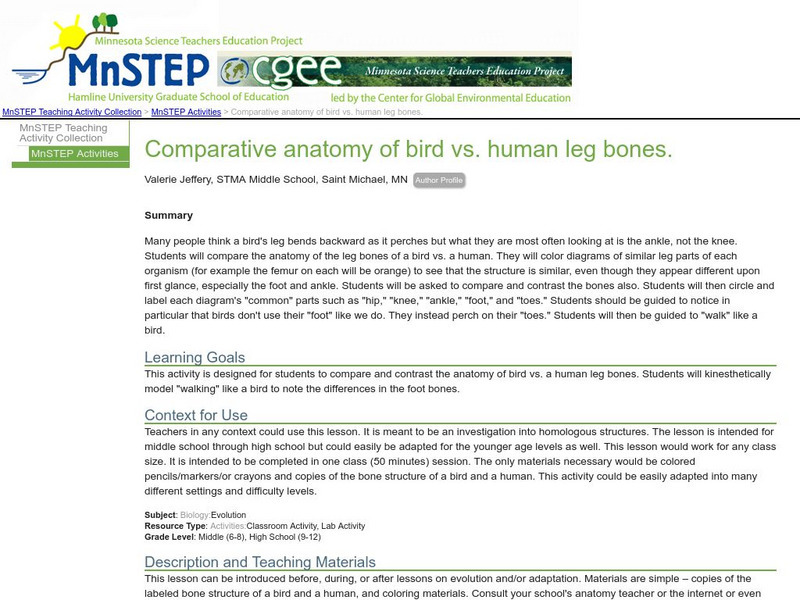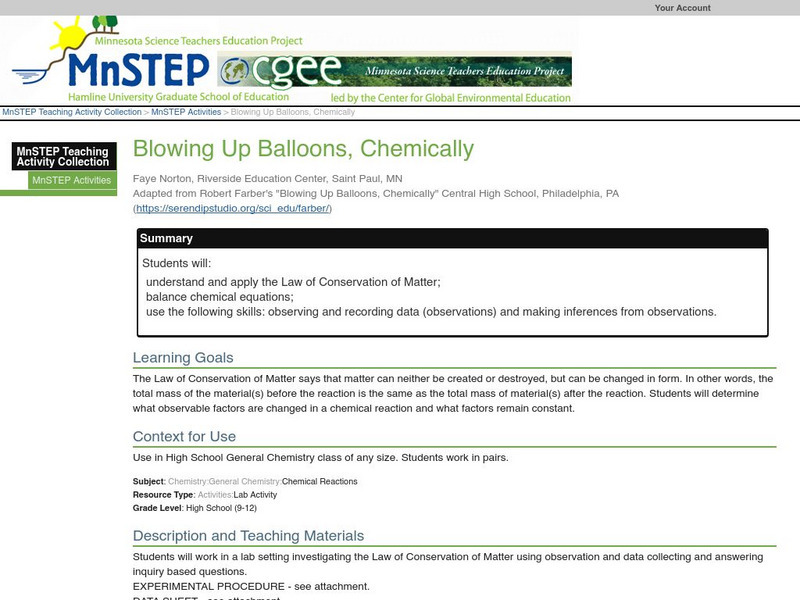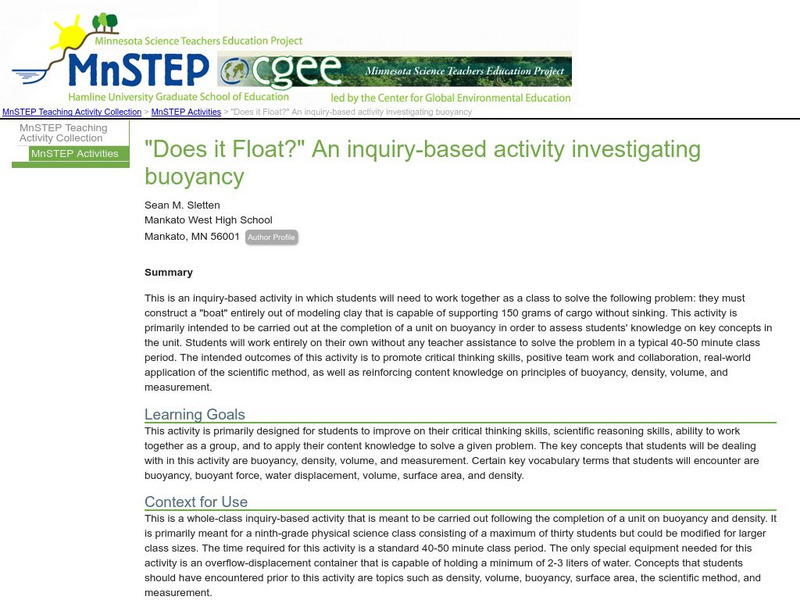Science Education Resource Center at Carleton College
Serc: Geology of the Credit River at Hidden Valley Park
In this earth science activity, students investigate the characteristics of the Credit River in an interdisciplinary inquiry based investigation. They will determine the speed the water moves, identify rocks and sediments in the river...
Science Education Resource Center at Carleton College
Serc: Mn Step: Schoolyard Trees: Creating a Field Guide for Your School
An interesting activity where young scholars observe and identify the trees in the schoolyard, then create a field guide for others to use.
Science Education Resource Center at Carleton College
Serc: "Chemory" the Game
In this classroom activity students will utilize the familiar matching game concept they played as youth to match elements and their symbols, ionic ions into formulas, and learn common ion charges of the most well known elements.
Science Education Resource Center at Carleton College
Serc: Investigating Factors Influencing Rates of Chemical Reactions
This lab investigates the factors that influence rates of reactions. Students will develop a hypothesis, test the hypothesis, collect data, then draw a conclusion based on the data.
Science Education Resource Center at Carleton College
Serc: Comparing Mechanical Advantage and Efficiency of Pulleys
Young scholars determine the mechanical advantage of three pulley set-ups. Then they measure the work input and output to calculate the efficiency. Finally, students determine the relationship between the mechanical advantage and the...
Science Education Resource Center at Carleton College
Serc: Discovering the Hidden Properties of Magnets
In this lesson, students determine which objects are helpful in determining the location and position of magnets that are hidden inside of closed boxes.
Science Education Resource Center at Carleton College
Serc: Investigating Rocks
In this classroom guided inquiry lesson, students will become geologists. They will investigate rocks and the properties we can use to describe them. Students will observe, record, and reflect on their findings. They will record their...
Science Education Resource Center at Carleton College
Serc: Investigating Gravity: Predicting Time to Hit the Ground
Students will drop and shoot horizontally "Nerf" balls from a variety of known heights then record the amount of time it takes for the ball to hit the ground for each trial. They will plot height vs. time data and create a trend line for...
Science Education Resource Center at Carleton College
Serc: Investigating Magnetism: What Are Magnets and Why Do They Attract or Repel
In this magnetism activity, students investigate why magnets attract certain objects and how the magnets can attract or repel each other by participating in a classroom activity. Students will observe, question, and investigate how the...
Science Education Resource Center at Carleton College
Serc: Tic Tac Toe Pick 3 in a Row Atomic Model Assignment
A choice menu assignment where students select between several extension activities that help understand the structure of the atom.
Science Education Resource Center at Carleton College
Serc: How High Is Big? Using an Astrolabe
Students observe and measure the shadows of fixed objects throughout the school year to learn about how the seasonal change affects the sun's position in the sky.
Science Education Resource Center at Carleton College
Serc: Investigating Simple Plants
Students will gather moss from the schoolyard, and observe it carefully, documenting their observations in their science notebooks. They will develop an investigable question from their observations, design and run an investigation on...
Science Education Resource Center at Carleton College
Serc: Calculating the Declination of the Sun for Elementary Students
In the school courtyard, students will measure the apparent path of the sun across the sky using a toilet plunger. Students will then generate questions as to why the sun appears to move, and what is really happening in the process. We...
Science Education Resource Center at Carleton College
Serc: Growing & Observing Crystals
For this investigation, middle schoolers will grow their own crystals changing one variable, as compared to the control crystals, in order to determine the best environment and conditions to grow the best, largest crystals.
Science Education Resource Center at Carleton College
Serc: How Small Is a Nanometer?
In this classroom activity students use dimensional analysis to gain an understanding of nanometers.
Science Education Resource Center at Carleton College
Serc: Environmental Interactions: Connectedness of a Natural System
A field experience where students undergo an exploration in a natural environment. They are introduced to the concepts of species, population, community, ecosystem, niche, and biosphere.
Science Education Resource Center at Carleton College
Serc: Comparative Anatomy of Bird vs. Human Leg Bones
This activity is designed for students to compare and contrast the anatomy of bird and human leg bones. Students will kinesthetically model walking like a bird to note the differences in the foot bones.
Science Education Resource Center at Carleton College
Serc: Blowing Up Balloons, Chemically
Students will understand and apply the Law of Conservation of Matter; balance chemical equations; use the following skills: observing and recording data (observations) and making inferences from observations.
Science Education Resource Center at Carleton College
Serc: How Do Rocks Compare to Soil?
In this classroom investigation students will observe and chart similarities and differences in rocks and soil.
Science Education Resource Center at Carleton College
Serc: Using Benthic Marcoinvertebrates to Determine Biodiversity in a River
For this investigation of macroinvertebrates, students will build rock baskets and place them in various parts of a river to collect insects. Students will group insects according to their pollution tolerance and use the PTI to determine...
Science Education Resource Center at Carleton College
Serc: Investigating Contour Maps: Creating Contour Maps by Surveying
In this activity, the students will understand how contour maps are created and appear the way that they do by using various materials to create and compare contour lines of different elevation levels.
Science Education Resource Center at Carleton College
Serc: Hydrogen and Oxygen Gas: An Explosive Interaction
This lab provides the opportunity for students to generate, collect, and test two very common gases, hydrogen and oxygen. They will test the combustion reaction of different proportions of the gases based on the most reactive explosion.
Science Education Resource Center at Carleton College
Serc: "Does It Float?" an Inquiry Based Activity Investigating Buoyancy
This is an inquiry-based activity in which students will need to work together as a class to solve the following problem: they must construct a "boat" entirely out of modeling clay that is capable of supporting 150 grams of cargo without...
Science Education Resource Center at Carleton College
Serc: Properties of Cations: Flame Test Lab
In this lab, students will learn the relationship between color emitted by atoms of metal compounds and their electron structure by using the flame test.


